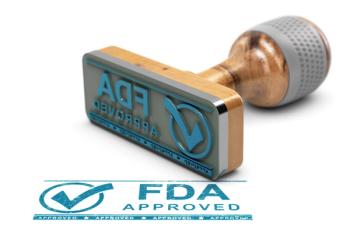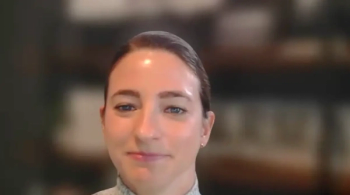
Patient Access, Public Health Advisor, and Legal Variances
Troy Trygstad, PharmD, MBA, PhD; Brian Hille, BSPharm, RPh; Mindy Smith, BSPharm, RPh; John Beckner, BSPharm, RPh; and Ned Milenkovich, PharmD, JD, identify patient access and the role of a pharmacist as a public health advisor.
Transcript:
Troy Trygstad, PharmD, MBA, PhD: The American Pharmacists Association—Mindy, you’ve got some familiarity in your career—had this quote for a long period of time that may be even more amplified now, that “The equivalent of the US population is in a pharmacy once a week.” Right? And so, how many folks walk into an Albertsons?
Brian Hille, BSPharm, RPh: It’s a lot.
Troy Trygstad, PharmD, MBA, PhD: It’s a lot. It’s in the millions.
Brian Hille, BSPharm, RPh: Yes. And in my world, because we are a pharmacy within a grocery store, too, we have this opportunity with all of these people who just are coming in to buy their groceries on top of those who actually use our pharmacy. So, it’s amplified greatly in our kind of a setting. I think that’s actually why Safeway Albertsons, the grocery store, traditionally has done very well and was an early adopter, because we had access to these patients and they’re coming through our door anyway, and so we can touch them. To John’s point, we have such a huge opportunity during flu season. Knowing that only 23% of patients have received their booster dose for tetanus, that is a tremendous opportunity for pharmacists to identify those patients during the time of a flu shot.
Troy Trygstad, PharmD, MBA, PhD: But let’s also not forget that we usually end the season somewhere in the low 40s for flu vaccination. Right? So, one begets the other. But if we focus on flu vaccination and that effort, and we’ve got a regular workflow going on because folks are coming in to get that, let’s get those other numbers up as well, right?
Mindy Smith, BSPharm, RPh: And also with pediatrics, the pharmacist can leverage their trusted relationship and inform the family to make sure that if they cannot do the state guidelines—immunize a child under 5, for example—they are also reminding the parent to get their baby vaccinated, too. So, that role of being that public health advisor also is an important role, just as important as giving the vaccine to those that they can.
Troy Trygstad, PharmD, MBA, PhD: That’s right. So, the sign out in front of the pharmacy that says “Flu vaccine available” is necessary to let them know that the flu vaccine is available in the pharmacy. But it’s also important to cue the person: “Oh, it’s flu season. I know to get the flu vaccination even if I get it at work or somewhere else, right?”
Mindy Smith, BSPharm, RPh: Right, yes.
John Beckner, BSPharm, RPh: You see a lot of pharmacies marketing their service, and they’ll have a sign out front that says
Troy Trygstad, PharmD, MBA, PhD: “Administering health today.”
Ned Milenkovich, PharmD, JD: Just one cautionary note. Most practicing pharmacists who are engaged in immunizations understand this, but some states will vary with respect to what immunizations are allowed to be administered by the pharmacist. And, of course, there’s always the age limitation and there’s also potentially a company limitation on age, which might deviate from what a state law is. In other words, the state may say, “Well, you can’t immunize less than a 2-year-old,” but the company may take the position that, “Well, we’re not going to immunize anyone that’s under 10 years old.” So, the practicing pharmacist just needs to be aware of those practical limitations on their ability to offer multiple immunizations that go beyond the flu vaccine.
Troy Trygstad, PharmD, MBA, PhD: We know we end the season in the roughly low 40s, as far as coverage of flu vaccinations. Just look at that statistic on its face.
Brian Hille, BSPharm, RPh: It’s pretty sad.
Troy Trygstad, PharmD, MBA, PhD: I see shame, I see…
Mindy Smith, BSPharm, RPh: Frustration.
Troy Trygstad, PharmD, MBA, PhD: I see…
John Beckner, BSPharm, RPh: Opportunity.
Troy Trygstad, PharmD, MBA, PhD: Opportunity, and I see risk maybe, right?
Ned Milenkovich, PharmD, JD: Perhaps.
Troy Trygstad, PharmD, MBA, PhD: Because at some point, we had a responsibility to look up the controlled substances reporting system. At some point, it becomes a standard of practice. Speak to that. How far along? If we’ve gotten past this, should pharmacists be able to immunize? We’re in the, “Can technicians administer?” space. When are we going to get to that point where, “Hey, you were supposed to counsel this patient on their need for X vaccination and it didn’t happen”? When do we get that flip when it goes from you’re not being advanced to it’s a standard and you have to do it?
Ned Milenkovich, PharmD, JD: It happened the moment pharmacists had the right to immunize, frankly. The risk was always there because you have a duty and you may have breached that duty, and you have to look at industry standards. And if they’re already in place and everybody else is doing it and you’re not, there’s proximate cause and then there’s injury. So, those are the 4 elements of a tort in negligence. In medical malpractice, in pharmacy malpractice, in any type of malpractice, you’re going to have those 4 elements. And the moment you breach your duty of care and when that duty of care is established and you causally created an injury, you are at risk. So, if I’m a plaintiff, I’m going to try to establish that. If I’m injured, I’m going to try to establish that this pharmacist should have known, should have had access to that information, and didn’t have access to that information, and as a result of that, I was injured. That’s a big problem for pharmacy. So, how do we get over that? Again, it goes back to access of information, sharing of data, sharing of information, creating standards of care, and adhering to those standards of care, so that nothing really falls through the cracks. And, of course, if it does, hopefully you have the proper negligence liability insurance in place to help you along in that situation. But you don’t even want to get there. You want to make sure that as pharmacists and as a pharmacy community, we have beat down the walls of barriers to information so that we’re in the best possible position to administer those immunizations without harm to the patient.
Troy Trygstad, PharmD, MBA, PhD: There’s a time and follow-up element associated with some vaccines in a series. An entire system has struggled with that. What are the panel’s thoughts on the opportunity and the challenge, perhaps within pharmacies, to engage in successful follow-up in series vaccinations? What does that look like for you, Brian?
Brian Hille, BSPharm, RPh: Yes, it’s obviously extremely important. I agree. We have a responsibility especially if we gave that first dose of that tetanus 10 years ago. We need to be the ones who are following up. We are now responsible for that patient to make sure that they get their next dose. Fortunately, data and systems kind of lend themselves to being able to give us clues into when those patients need that vaccination. So, we do a fair amount of making sure that we are identifying those patients who require a follow-up and doing outreach to them. We like to try to keep as much of that outreach automated as we possibly can and only involve our pharmacists as kind of a last resort, which is great. And they’re great as a last resort because they have that personal relationship. And so if we failed with a text and a phone call, get that pharmacist to pick up the phone and invite the patient in for their next dose; that’s usually pretty effective.
Troy Trygstad, PharmD, MBA, PhD: So, Mindy, what do data and decision support and technologies have to do with aiding in follow-up?
Mindy Smith, BSPharm, RPh: Great question. The opportunity that we have, and even with PrescribeWellness, is being able to use business rules to identify those series vaccines or identify a service such as Medsync. And a med falls out of the Medsync profile, where you can capture that information and put it on the clinical calendar and schedule and automate that outreach to that patient, so that it’s the reminder, too, to get them back in there. That’s probably half the job. But that technology is available.
Troy Trygstad, PharmD, MBA, PhD: So, another neat evolution is this idea of scheduling patients on an appointment-based model. There are tens of millions of patients on a Medsync appointment-based model; not just autofill, but some sort of clinical activity cognitive service happening each month. What a great time to go in prior to that, either through decision support, tech help, or somebody screening a resident, to queue up for that visit. “Hey, we know we want to have this, this, and this conversation around vaccinations because we could prework and know when this patient is coming in or we know when we’re going to their house,” right?
Mindy Smith, BSPharm, RPh: Right, absolutely, yes. And it’s almost like a pre-call list. You want to get ready for your day. You have all of your patients you can line up. What information do I need to address with that patient, education, etc? I think it’s helpful having a way to organize that workflow so that you know exactly what you are coming in for that day. Just like all of us do, I work on my calendar. What do I got going on tomorrow that I need to get ready for? Same concept, but we need to do that from a clinical perspective and help pharmacists manage their patients in a much more effective, easy way.
John Beckner, BSPharm, RPh: We talk about series completion. Obviously, it’s important to the patient, it’s important to industry. The industry wants their vaccines used and series completion. But one thing that we may lose sight of is that series completion and involvement in that presents a wonderful collaborative opportunity with physicians. They’ve gone to the physician first, and it’s more convenient to complete dose 2 and 3 at the pharmacy. That’s a great collaborative opportunity and vice versa.
Newsletter
Stay informed on drug updates, treatment guidelines, and pharmacy practice trends—subscribe to Pharmacy Times for weekly clinical insights.


















































































































































































































